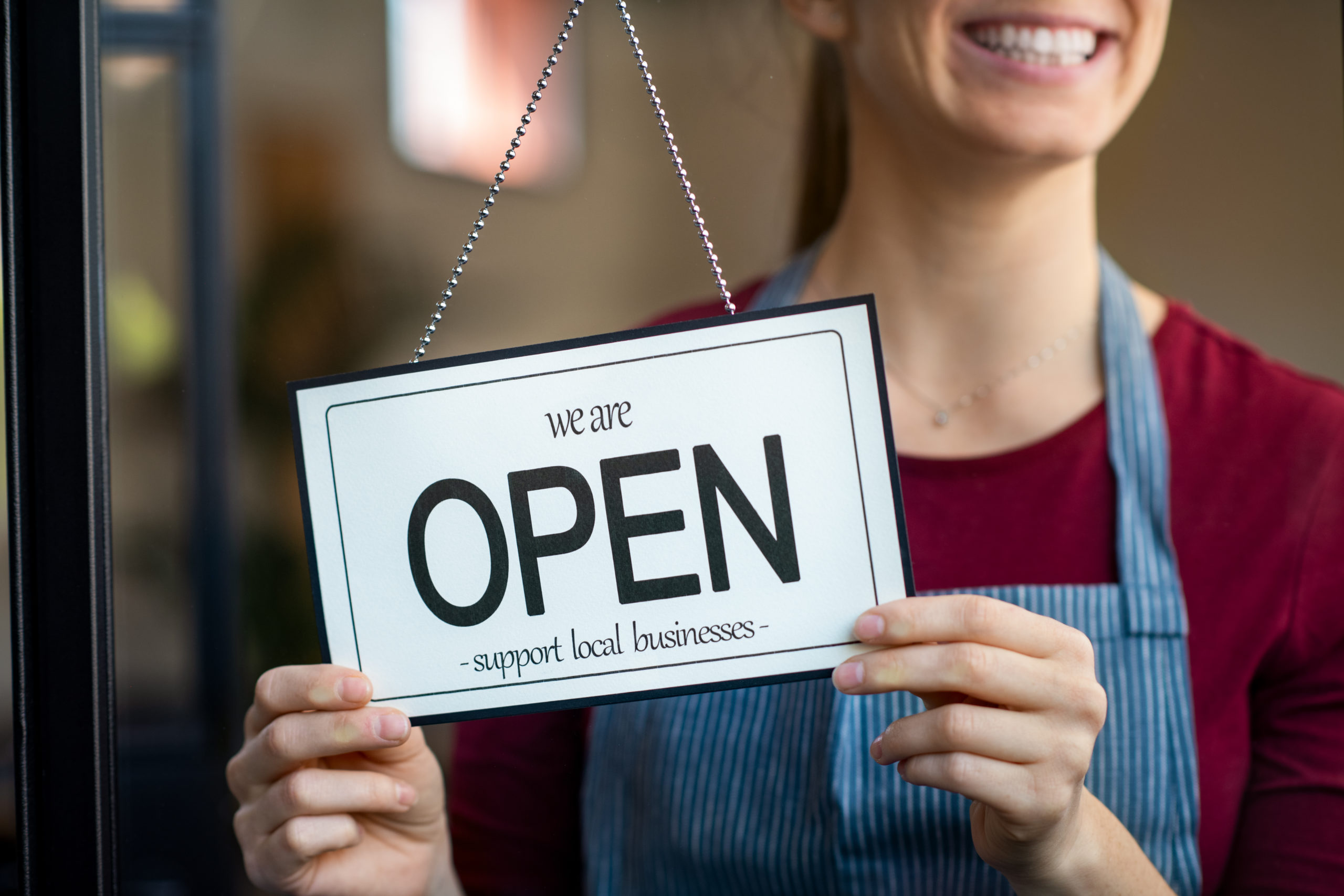The COVID-19 outbreak pushed no industry (save for healthcare and biotechnology) to evolve as dramatically as the grocery retail industry. Within weeks of the pandemic’s arrival, big box retailers and local grocery chains alike were driven to upend their operations across the board, from stocking to staffing to safety protocols.
Behemoths such as Walmart and Costco, which already invested billions of dollars in developing their e-commerce platforms in an effort to compete with Amazon, were well-positioned to capitalize on the rapid shift to online orders. Their stockpiles of cash, strong supply chains, and comparatively robust inventory of toilet paper and paper towels benefitted them, too, as did their status as “essential” businesses allowed to stay open.
Meanwhile some smaller, local rivals struggled to stay in-stock and obtain PPE to protect shoppers and staff. But smaller grocers, even as they ceded share to big box retailers, found new sources of growth. The pandemic revitalized local customer bases,as shoppers turned to their neighborhood grocer in order to shop closer to home, avoid crowds, and try their luck finding items out of stock at the chain stores.
Nearly one year into the pandemic, the grocery industry is being tested like never before. Here we examine the challenges facing big box supermarkets and local grocers during the pandemic, how they’re responding, and what’s in store for the upcoming year.
Big box behemoths
Grocery sales at big box behemoths like Walmart and Costco soared early in the pandemic. The large chains, which had already begun wading into e-commerce to compete with Amazon and other online rivals, benefitted from these prior investments. A stockpile of cash enabled them to adapt quickly to the pandemic’s pressures and capitalize on a surge in demand for online ordering.
Additionally, their status as “essential” businesses allowed them to remain open while local grocery chains shuttered.
The heavy-hitters also carried the right retail mix for the pandemic, with a healthy inventory of toilet paper, paper towels and other items required for consumers to shelter in place. When consumers depleted their shelves, strong supply chains helped big box grocers restock their aisles quickly. Initially, business was so robust that Walmart, the nation’s larger retailer, had to ask customers to buy less.
These advantages of scale accrued throughout the year for Walmart, Costco, and others, boosting online sales well beyond early forecasts. Walmart’s e-commerce sales rose 97% in the second quarter, while store pickup and delivery slots increased 30% during the same period.
Kroger, the nation’s largest grocery chain, became one of the top 10 U.S. e-commerce companies this year, reporting $11.3 billion in annual digital sales, according to eMarketer.
But the scale of these big box enterprises also magnified the costs and complexities they shoulder. Coordinating e-commerce business, implementing safety protocols, and managing staffing and inventory takes Herculean effort. In April, Walmart, with 1.5 million U.S. workers and more than $500 billion in global sales, set a goal to hire 5,000 workers daily. An internal team developed a process to onboard workers within 24 hours, instead of the usual two weeks.
However,the sustained uptick in consumer demand has more than offset higher expenses for the big box retailers.
Local grocers
Meanwhile, local grocers struggling under the pandemic’s demands continued to lose ground to larger retailers. Unlike big box grocers, when the pandemic hit, most local grocery chains hadn’t begun building the infrastructure, technology, and delivery networks crucial to fulfill online orders.
The costs of doing business during a pandemic fell disproportionately on independent grocers, who lack the cost advantages of scale. They shelled out money to install plexiglass barriers at checkout and sanitize baskets, carts, registers, and doors. They battled a shortage of personal protective equipment (PPE) for staff, and found themselves short-staffed when some chose not to work. They had less priority when it came to getting critical supplies from vendors but still accepted inevitable price hikes.
Smaller stores tried following the lead of larger chains by expanding curbside pickup and delivery, but they lacked the technology, financial resources, and sophisticated supply chains of their larger competitors. Forced to be inventive, they scrambled to move more of their business online.
Some had their cashiers take curbside-delivery orders over the phone and call customers back to complete their purchases. But added costs for labor, delivery, and health protocols cancelled out any growth in business. Overall, the costs of fulfilling online orders, which are less profitable than buying in stores, hurt independent grocers running on already thin profits.
But the pandemic highlighted the critical role local grocers, long the industry’s underdog, play in providing access to fresh food and liaising with the community. The changes wrought by COVID-19 provided an opportunity to focus more deliberately on serving their communities and catering to the local customer.
Conclusion
The pandemic shook up the grocery industry, overhauling retailers of all sizes and reshaping the landscape. As we enter 2021, big-box retailers benefitting from economies of scale and prior investment are emerging as the victors while local grocery chains continue to struggle.
But the plight of the pandemic can lift small grocers, too. Though not as prepared financially or technologically for a pandemic, savvy grocers saw that the smaller scale of their enterprises granted one crucial advantage over big boxes: Local, independent grocers know firsthand what their communities want and need.
The pressures of the COVID-19 outbreak this year have exacerbated ongoing struggles in the grocery industry. But the stores that bet on technology today will be in a stronger position to succeed post-pandemic. Check out this short video on how CB4 is helping grocers navigate the pandemic and improve customer experience.



